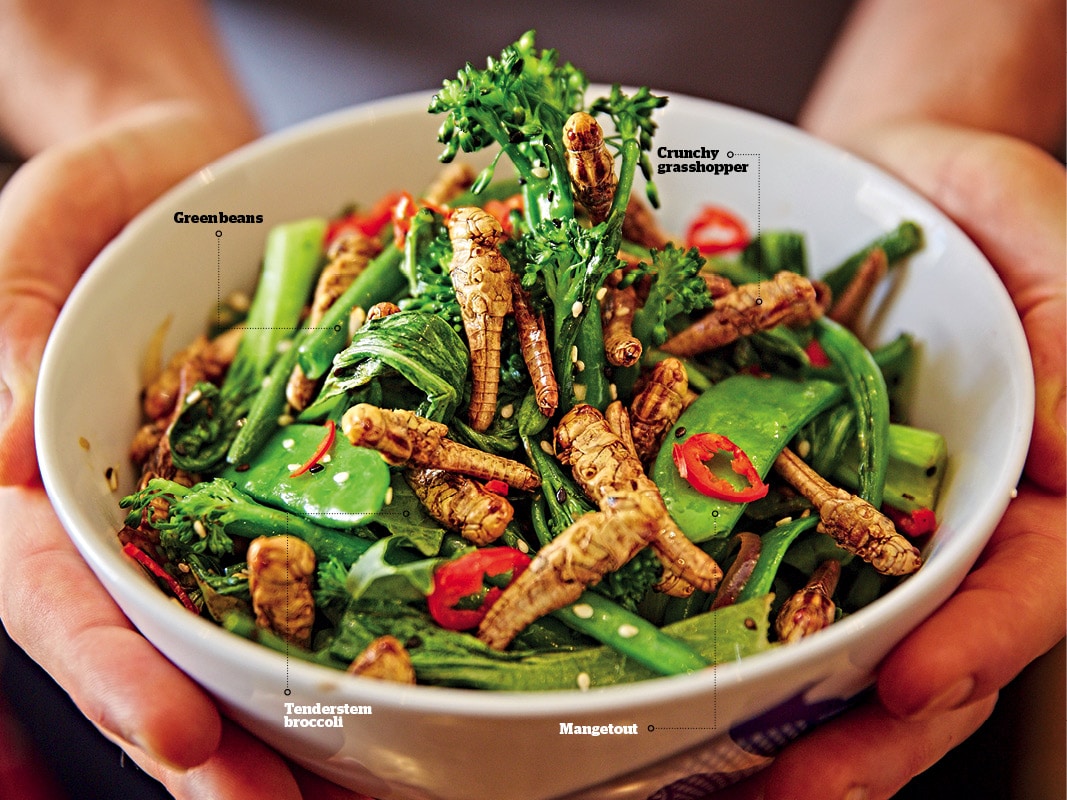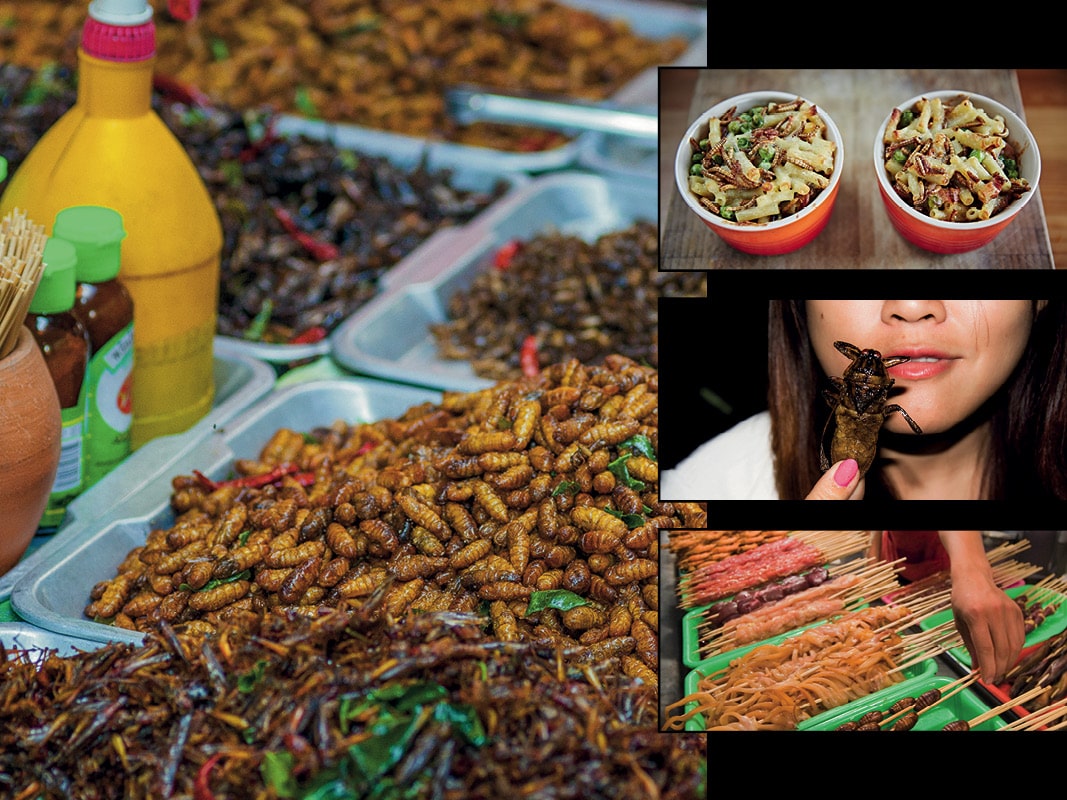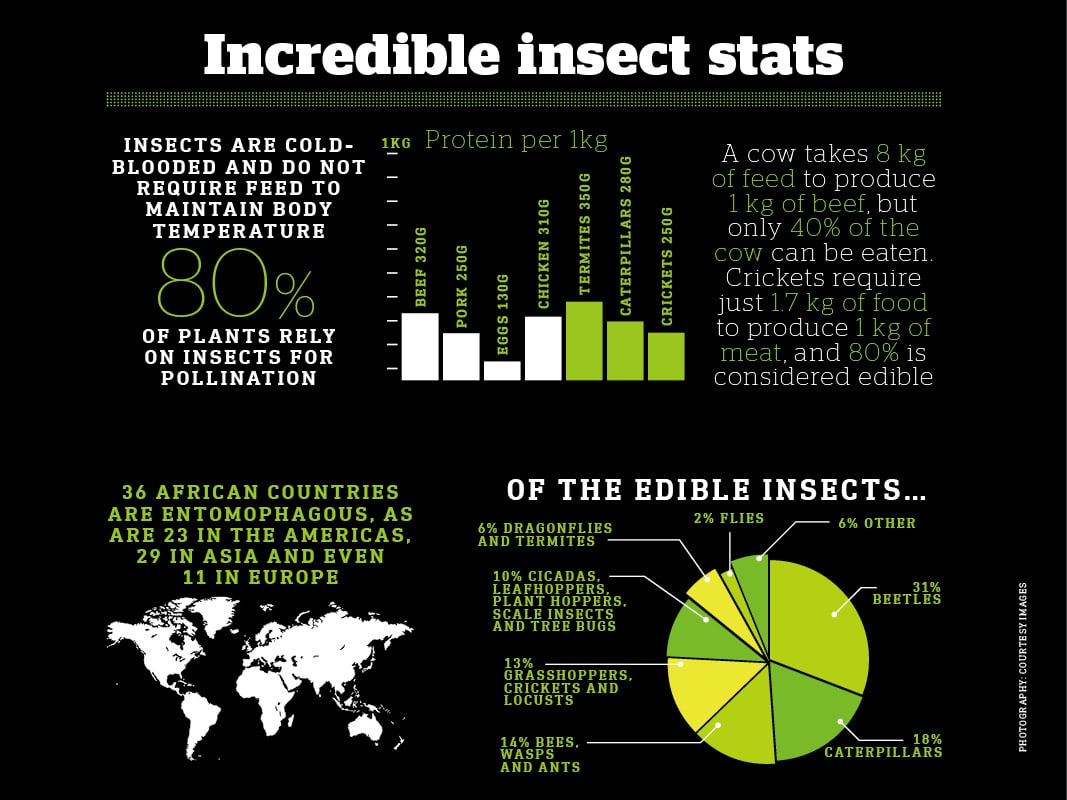Should we eat insects? The world’s growing population needs more food, but are insects really the answer?
If global population growth continues to increase at its present rate, by 2050 there will be close to 10 billion people in the world. Feeding a burgeoning and ever-more demanding population is going to require a dramatic increase in food production, with estimates suggesting we will need to increase food production by 70%.
So, what’s the solution? How can we meet these ever-increasing demands for protein? How can we feed nearly 10 billion people? One possible answer to that question is entomophagy – the eating of insects.

The very thought of such an act is enough to fill some people with a sense of repulsion, and yet our often common prejudgement towards entomophagy is not justified from a nutritional or environmental perspective. Insects are healthy, nutritious alternatives to mainstream staples such as chicken, pork and beef. They’re rich in protein, high in good fats and boast an array of micronutrients essential to the
human body.
International cuisine
While an alien concept to many in the western world, there are around two billion people worldwide for whom insects are a regular part of their diet. In most western countries, however, people view entomophagy with a sense of disgust, and associate eating insects with primitive behaviour. Such negative feelings do little to dispel the common misconception that people who eat insects in the developing world do so because of starvation. However, they don’t do it because there is little else available to them, but instead due to the taste and the fact that it has long been part of local food cultures. Some insects are even seen as delicacies.

Delicacies or not, edible insects fit the mould from an environmental point of view. Research has shown that crickets are twice as efficient in converting feed to protein than chicken, at least four times more efficient than pigs and 12 times more efficient than cattle, and what’s more, they require significantly less quantities of feed, and much less water, than livestock. However, a word of caution. On the face of it, given their nutritional content and the reduced resources required to rear them in comparison to meat, insects seem a viable solution to the need to produce more sustainable sources of protein. Yet, it’s hard to say what effect the mass production of insects would have on the environment, or if it would be sustainable in the long term at all.
Many of the two billion people who already include insects in their diet do so having caught them in the wild, as opposed to buying them from the large-scale insect farms that would be required to produce the quantities needed for larger populations. That’s not to say it’s not viable, only that at this stage the full extent of such production is not yet known.

Crunch time
And yet, while insects are commonly consumed as a food source in many regions of the world, western societies are still largely averse to the practice of eating them because of the very fact they are insects. We have always seen insects as little more than pests, bugs, creepy crawlies, even objects of disgust – never as a food source.
For the full article on eating insects and its benefits, get your September issue of Tech.







